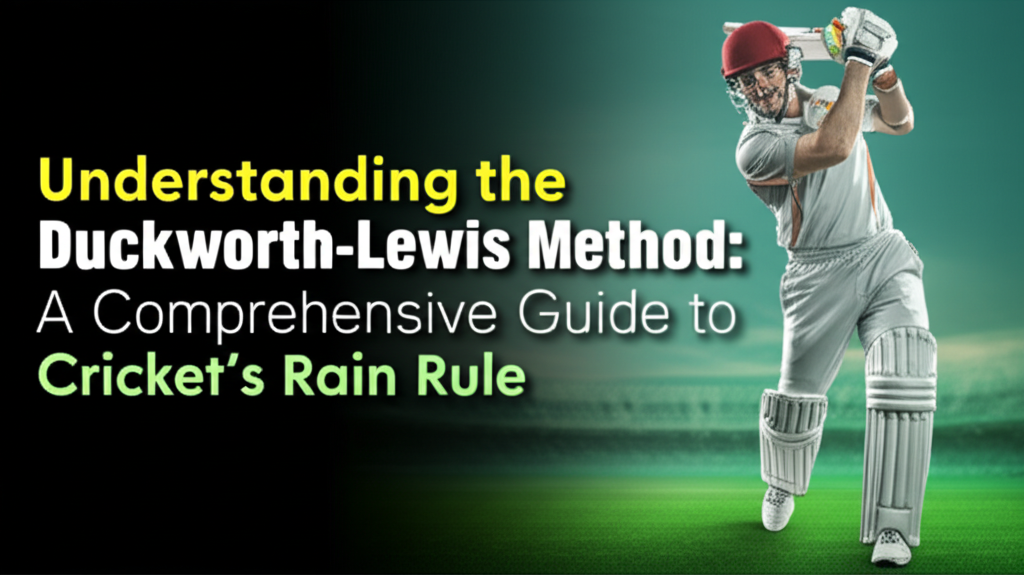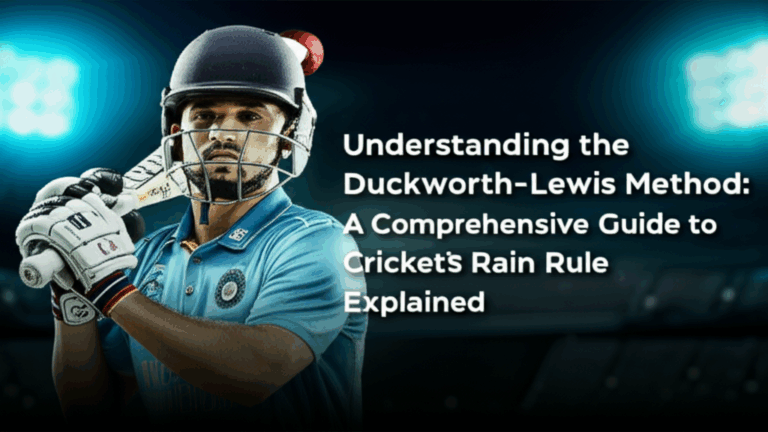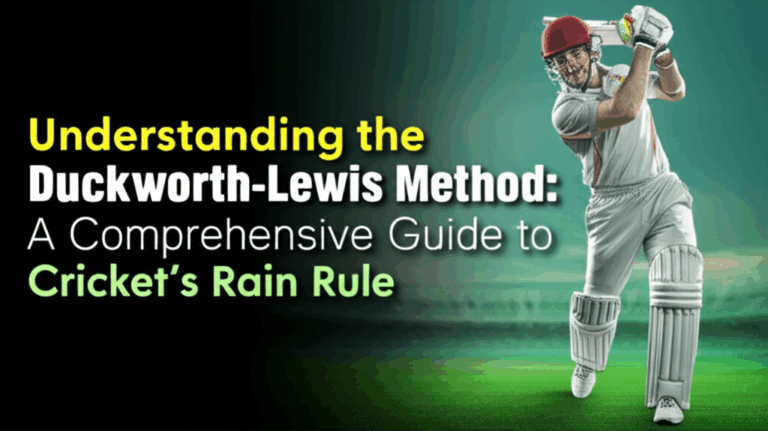
Cricket, often dubbed the gentleman’s game, has its share of thrilling moments, and nothing can be more suspenseful than the looming threat of rain on a match day. For players, fans, and organizers alike, rain can turn a perfectly set cricketing event into a confusing mess, especially when it comes to determining the outcome of the match. This is where the Duckworth-Lewis method comes into play. Understanding this method is essential for anyone looking to grasp the intricacies of limited-overs cricket in the face of unpredictable weather.
In this comprehensive guide, we will delve into the Duckworth-Lewis method, often referred to simply as DLS. You’ll learn about its origins, how it works, its importance in the game, and real-world applications. By the end of this article, you’ll have a solid understanding of why this method is crucial for maintaining fairness in cricket when rain decides to make an appearance. We’ll also tackle some frequently asked questions to ensure all your queries are addressed.
Understanding the Duckworth-Lewis Method
The Duckworth-Lewis method was devised by English statisticians Frank Duckworth and Tony Lewis in the 1990s. The primary aim was to provide a fair way to calculate target scores in limited-overs matches that have been disrupted by weather conditions, particularly by rain. Before DLS, rain interruptions often led to confusion and unfair advantages, with the team batting second sometimes facing an insurmountable target.
At its core, the Duckworth-Lewis method is based on the resources available to both teams — namely, the number of wickets in hand and the number of overs left to play. This allows for an accurate calculation of how much of the match has been played and how much is still available, thus determining a fair target for the team batting second. The beauty of this method lies in its statistical basis, which uses historical data to create a fair framework for calculating scores. Let’s break down the key components of this method.
Key Components of the Duckworth-Lewis Method
1. Resources Available
The DLS method operates on the principle of resources: the overs left and the wickets in hand. Each match starts with a set number of overs (usually 50 in ODIs) and 10 wickets. As the game progresses, the resources decrease as overs are bowled and wickets fall. The DLS method quantifies these resources to derive a fair target.
2. The DLS Table
One of the fundamental tools used in the DLS method is the DLS table, which provides various percentages representing the resources remaining at any point in a match. This table is predetermined and is based on extensive statistical data from past matches. It allows for quick calculations during a game, helping officials and teams to determine what the target score should be if rain interrupts play.
3. Calculating Adjusted Targets
When rain interrupts a match, the calculation involves comparing the resources used by the team batting first with those available to the team batting second. For example, if Team A scores 250 runs in 50 overs and Team B’s innings is interrupted after 30 overs with 5 wickets lost, the DLS method will calculate how much of the match Team B has already played, and from that, derive an adjusted target for them to chase.
4. Application of the DLS Formula
The formula used in DLS calculations can seem complex at first glance, but it operates under simple principles. Essentially, it considers the original score, the percentage of resources used, and the new target set after rain. The formula is often simplified for practical use, but the underlying statistics can be quite intricate.
Benefits and Importance
So, why is the Duckworth-Lewis method so vital in cricket? Here are several key benefits:
- Fairness: The primary goal of DLS is to ensure fairness when interruptions occur. By basing calculations on statistics, it minimizes bias and ensures that teams have an equitable chance of winning.
- Statistical Transparency: The method is grounded in statistical analysis, which helps players and teams understand the rationale behind any adjusted targets.
- Quick Decision-Making: The use of DLS tables allows officials to make quick, informed decisions during matches, maintaining the flow of the game even in adverse weather conditions.
- Historical Relevance: DLS is based on historical data, which means it reflects the real-world dynamics of cricket matches, making it a relevant tool for decision-making.
Practical Applications
Understanding the Duckworth-Lewis method is not just for officials; players, coaches, and fans alike can benefit from its principles. Here are some practical applications:
1. Coaches and Team Strategy
Coaches can use the DLS method to devise strategies for both batting and bowling under pressure. Knowing how the resources fluctuate can help teams make informed decisions on when to accelerate scoring or when to defend wickets.
2. Fan Engagement
For fans, understanding DLS can enhance their viewing experience. When rain disrupts play, knowing how the target is recalculated can make watching the game even more thrilling. Instead of just waiting for the rain to stop, fans can engage with the game on a deeper level.
3. Analysis and Commentary
Sports analysts and commentators can use the DLS method to provide insights during matches. By explaining how targets are calculated and what the implications are for both teams, they can elevate the audience’s understanding and enjoyment of the game.
4. Historical Analysis
Scholars and statistics enthusiasts can analyze past matches using the DLS method to study how rain interruptions have historically affected game outcomes. This can lead to deeper insights into the strategies employed by teams under pressure.
Frequently Asked Questions
What is the Duckworth-Lewis method?
The Duckworth-Lewis method, developed by Frank Duckworth and Tony Lewis, is a statistical formula used in cricket to calculate target scores for teams batting second in limited-overs matches that have been interrupted by weather, particularly rain. It evaluates the resources available, such as overs remaining and wickets in hand, to ensure fair play.
How does the DLS method work?
When rain interrupts a match, the DLS method uses a predetermined table of resource percentages to assess how much of the match has been played and how much is left. Based on this, it calculates an adjusted target for the team batting second, ensuring fairness despite interruptions.
Why was the Duckworth-Lewis method created?
The method was created to address the issues of fairness and clarity in cricket matches affected by rain. Before DLS, determining scores in rain-affected games was often arbitrary and led to disputes and confusion. DLS provides a structured and reliable approach to calculating targets.
How accurate is the DLS method?
The DLS method is considered highly accurate due to its basis in extensive statistical analysis and historical data. While no method can be perfect, DLS has been widely adopted and trusted in international cricket for its fairness and effectiveness in managing interruptions.
Can the DLS method be applied to other sports?
While the Duckworth-Lewis method is specifically designed for cricket, the underlying principles of resource management can be adapted to other sports with limited time or scoring opportunities affected by interruptions. However, each sport would require its own tailored approach based on its unique rules and structure.
What happens if the DLS method fails to provide a clear result?
If the DLS method fails to provide a clear result, match officials can revert to established rules or procedures for handling incomplete matches. In some cases, if a match cannot be completed, it may be declared a no-result, meaning neither team wins.
Conclusion
The Duckworth-Lewis method is more than just a technical formula; it’s a crucial element that ensures the integrity of cricket when the weather plays spoilsport. By understanding the mechanics behind DLS, you can appreciate the game on a deeper level, whether you’re a player, coach, or fan. This method bridges the gap between unpredictability and fairness, making cricket more enjoyable for everyone involved.
As you continue to engage with cricket, I encourage you to keep an eye on how DLS impacts matches and think about its strategic implications. Whether you find yourself in the stands or on the field, a solid grasp of the Duckworth-Lewis method will enhance your experience of this beautiful game. If you have any more questions or want to share your insights, feel free to reach out and discuss!





